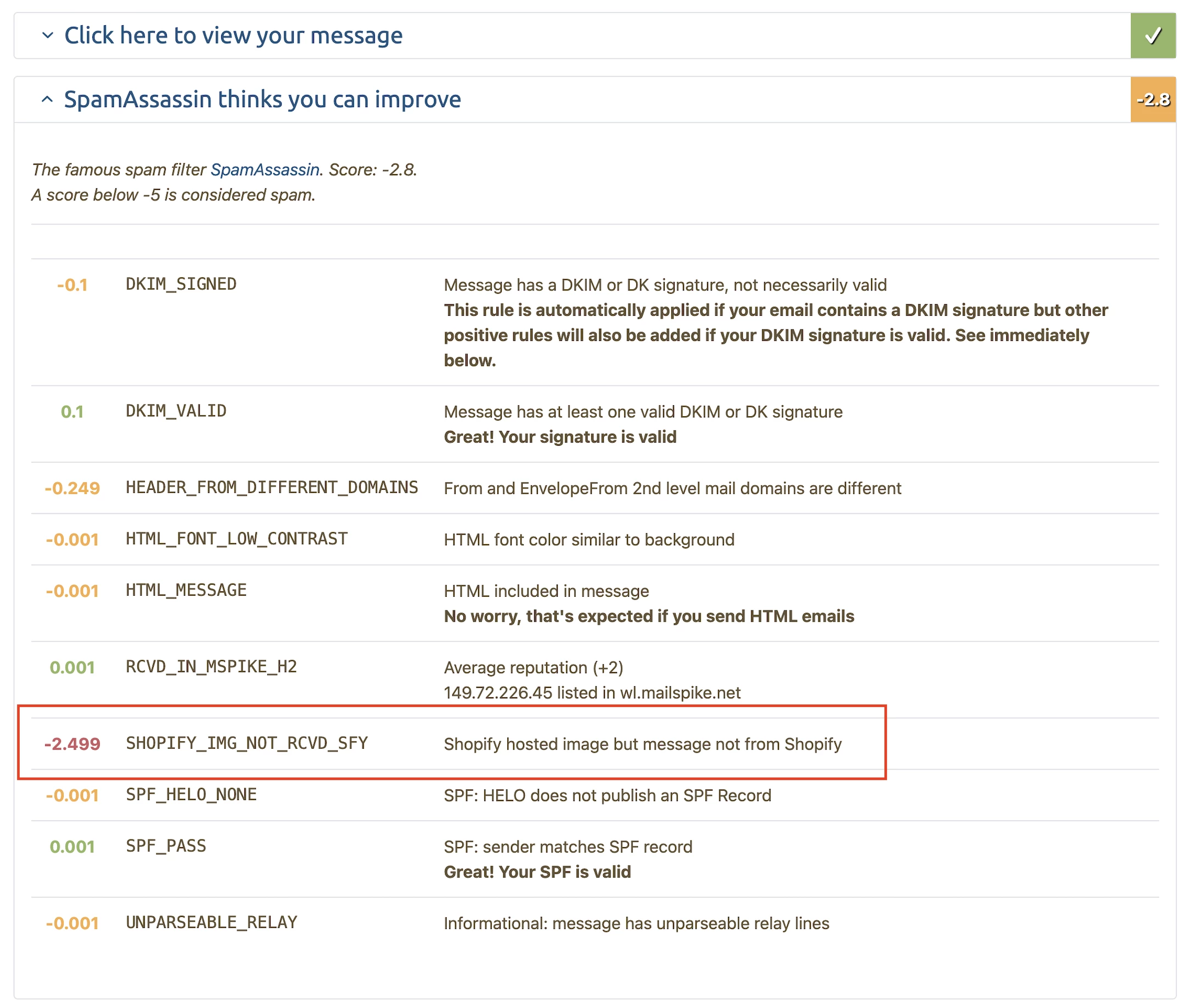So as a standard test I added a mail-tester.com email address to a Klaviyo list, and included it in a test campaign send.
The result is a SpamAssasin error:
SHOPIFY_IMG_NOT_RCVD_SFY
Any ideas can I debug further and/or fix?
I’m already somewhat familiar with the techy side of email headers, deliverability, DNS, HTML, networking etc having worked in a tech support role - but just wondering if this is something where others have experienced and/or already fixed it.
I did have a ticket related to this, but got told “it’s a Shopify issue” which is just not very helpful.
Context:

Best answer by David To
View original



![[Academy] SMS Strategy Certificate Badge](https://uploads-us-west-2.insided.com/klaviyo-en/attachment/2f867798-26d9-45fd-ada7-3e4271dcb460_thumb.png)



![[Academy] Deliverability Certificate Badge](https://uploads-us-west-2.insided.com/klaviyo-en/attachment/505f2253-cde5-4365-98fd-9d894328b3e0_thumb.png)
